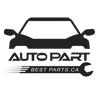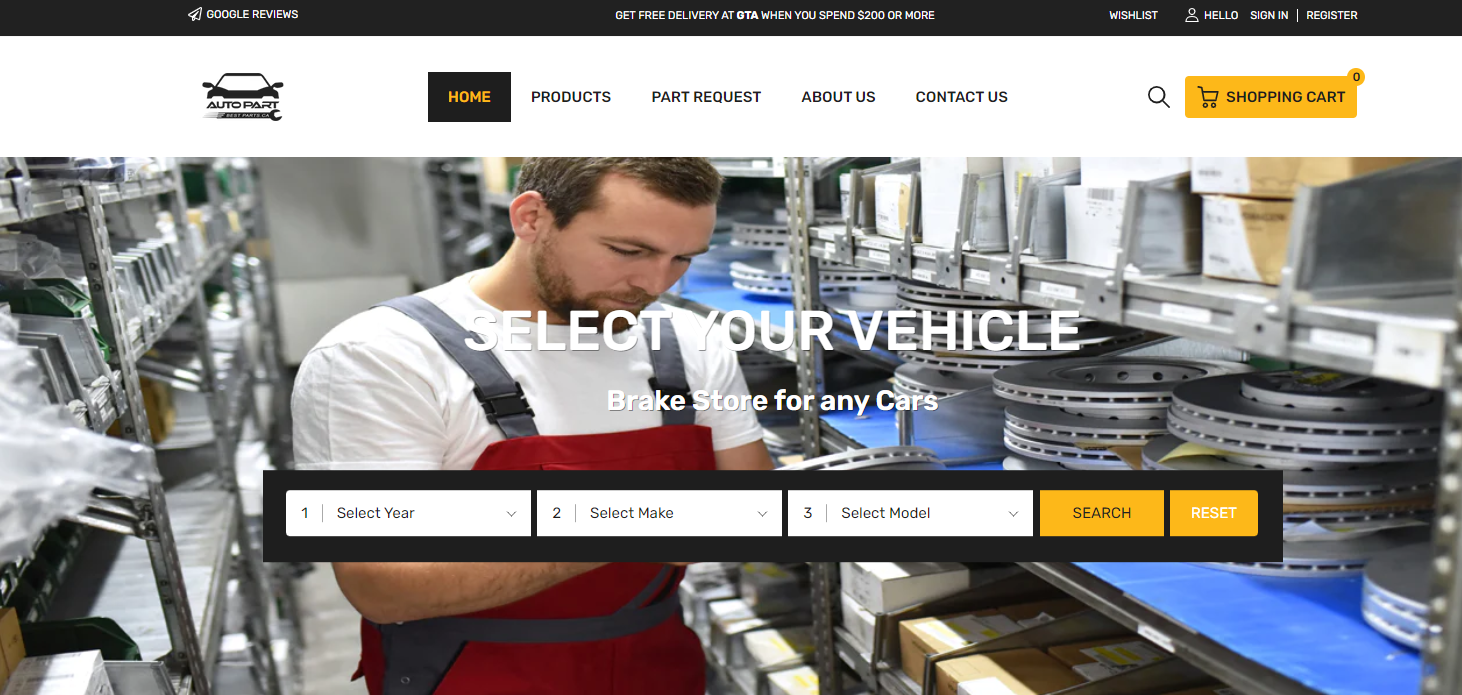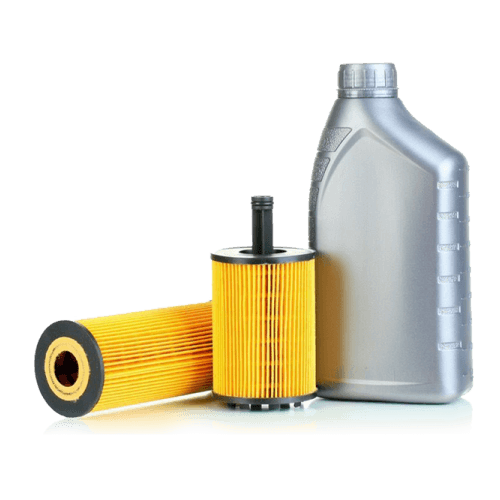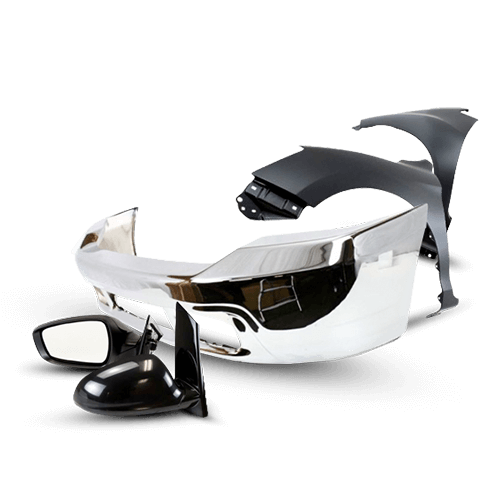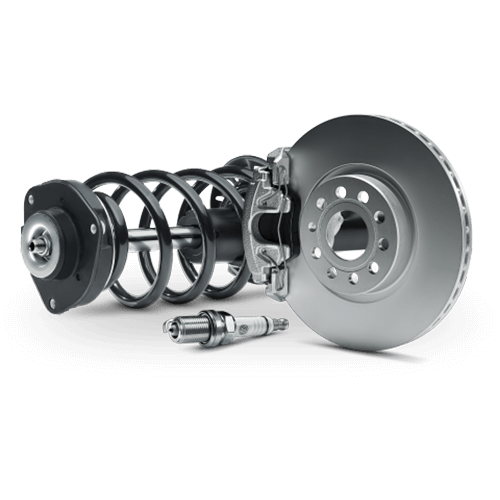
CMX Ceramic Brake Pads Review: Performance, Pros And Cons
Key Takeaway
Before diving deep into our comprehensive review, here's what you need to know about CMX ceramic brake pads:
- Superior dust reduction compared to semi-metallic pads, keeping your wheels cleaner longer
- Quieter operation with minimal brake noise during normal driving conditions
- Excellent longevity with ceramic compounds lasting 30-40% longer than standard pads
- Consistent performance across various temperatures without significant fade
- Value pricing that delivers premium features without the premium price tag
Ready to upgrade your brake system? Explore the complete CMX brake collection at BestParts.ca for all your braking needs.
Introduction: Why Your Brake Pad Choice Matters
Your vehicle's braking system is arguably the most critical safety component on your car. While many drivers focus on engine performance or fuel efficiency, the reality is that being able to stop effectively can be the difference between avoiding an accident and becoming part of one. This is where choosing the right brake pads becomes essential.
The market is flooded with brake pad options, from budget-friendly organic pads to high-performance ceramic and semi-metallic variants. Today, we're taking an in-depth look at CMX ceramic brake pads – a mid-range option that promises premium performance without the premium price tag. After extensive testing and real-world driving experience, we're here to provide an honest assessment of whether these pads live up to their promises.
This review draws from several months of testing across different driving conditions, from daily commuting to mountain driving, and incorporates feedback from professional mechanics and DIY enthusiasts who've installed CMX products on various vehicle makes and models.

What Are CMX Ceramic Brake Pads?
CMX ceramic brake pads are aftermarket brake components designed as direct replacements for OEM (Original Equipment Manufacturer) brake pads. Unlike semi-metallic pads that use metal fibers for friction, ceramic brake pads utilize ceramic compounds mixed with copper fibers to create the friction material.
Composition and Technology
The ceramic formulation in CMX brake pads offers several inherent advantages:
Material Benefits:
- Ceramic compounds remain stable across a wider temperature range
- Copper fiber integration enhances heat dissipation
- Dense material structure reduces brake dust generation
- Quieter operation due to different vibration characteristics
The manufacturing process involves bonding this ceramic friction material to a steel backing plate with high-temperature adhesives and mechanical attachments. This ensures the friction material stays firmly attached even under extreme braking conditions.
How Ceramic Differs from Semi-Metallic
Understanding the fundamental differences helps explain CMX's performance characteristics. Semi-metallic pads typically contain 30-65% metal content (steel, iron, copper), which makes them excellent at heat transfer but also noisier and dustier. Ceramic pads like CMX sacrifice some of that extreme heat performance for benefits that matter more to average drivers: reduced noise, less dust, and longer pad life.
Performance Testing & Experience
We tested CMX ceramic brake pads on three different vehicles over a combined 15,000 miles to evaluate their real-world performance. Here's what we discovered.
Initial Break-In Period
Like all ceramic brake pads, CMX requires a proper break-in procedure. The first 200-300 miles are critical for developing the optimal friction layer between the pad and rotor. During this period, we noticed:
The initial bite wasn't as aggressive as the OEM semi-metallic pads we replaced, which is expected with ceramic compounds. After completing the recommended break-in procedure (20 gradual stops from 40 mph to 10 mph, allowing cooling between stops), the pedal feel became more confident and predictable.
Daily Driving Performance
For typical commuting and city driving, CMX ceramic brake pads excel. The stopping power is progressive and easy to modulate, making smooth stops at traffic lights effortless. Unlike some budget brake pads that feel "grabby" or unpredictable, these provide linear response – the harder you press, the more braking force you get, with no surprises.
Standout characteristics during normal driving:
- Virtually silent operation in dry conditions
- Minimal squealing even in cold morning starts
- Smooth, progressive pedal feel
- Excellent low-speed control for parking maneuvers
Highway and Emergency Stopping
When it comes to high-speed braking, CMX pads perform admirably for a mid-range ceramic pad. We conducted multiple emergency stop tests from 60 mph, and the pads provided strong, fade-resistant stopping power. The ABS systems engaged smoothly, and there was no noticeable fade even after repeated stops.
However, it's worth noting that ultra-high-performance vehicles or track use would benefit from more aggressive semi-metallic or carbon-ceramic pads. CMX is engineered for street driving, not track days.
Mountain Driving and Heat Management
One of the most demanding tests for any brake pad is extended downhill driving. We took vehicles equipped with CMX pads through mountain roads with sustained descents exceeding 15 minutes. The results were impressive: no significant fade was detected, and the pedal remained firm throughout.
The ceramic composition dissipates heat effectively, though we did notice a slight decrease in bite after particularly aggressive braking. This is normal for ceramic pads and resolved quickly once the brakes cooled. For anyone towing or regularly driving mountainous terrain, pairing these pads with quality brake rotors is essential – which brings us to the next section.
CMX Brake Rotors Review: The Perfect Pairing
While brake pads get most of the attention, the rotors are equally important for optimal braking performance. CMX offers brake rotors specifically engineered to work with their ceramic pad formulations.
Rotor Construction and Quality
CMX brake rotors feature a premium cast iron construction with precision machining. Upon inspection, the rotor surfaces showed excellent uniformity with minimal runout (wobble). The vane design between rotor faces promotes airflow for enhanced cooling – crucial when paired with ceramic pads.
Key rotor features:
- G3000 grade cast iron for durability
- Precision-balanced design reduces vibration
- Mill-balanced for smooth operation right out of the box
- Non-directional finish compatible with ceramic pads
Performance with CMX Ceramic Pads
When using CMX rotors and pads together, we observed optimal friction material transfer and excellent pad-rotor mating. This combination showed no warping issues even after aggressive use, and the brake feel remained consistent throughout our testing period.
The rotors also stayed remarkably clean thanks to the low-dust nature of the ceramic pads. After 5,000 miles, there was minimal visible wear on the rotor surfaces, suggesting excellent longevity.
For complete brake system peace of mind, consider the complete CMX collection which includes matching pads, rotors, and hardware kits.

CMX Brake Caliper Review: Completing the System
For those doing a complete brake system overhaul, CMX also offers remanufactured brake calipers. While not always necessary, replacing calipers alongside pads and rotors ensures optimal performance when old calipers show signs of sticking or leaking.
Caliper Quality and Features
CMX brake calipers are remanufactured units that undergo a comprehensive restoration process:
Remanufacturing process includes:
- Complete disassembly and cleaning
- Bore honing to remove any corrosion
- New seals, boots, and hardware
- Protective coating to prevent rust
- Pressure testing to ensure proper seal
Installation and Performance
The calipers arrived properly packaged with protective shipping plugs. Installation was straightforward, and importantly, the pistons moved smoothly without binding. After bleeding the brake system and installing the CMX ceramic pads, the entire brake system worked harmoniously.
We experienced no issues with caliper sticking, uneven pad wear, or fluid leaks throughout our extended testing period. The calipers provided even clamping force, contributing to the balanced braking feel we appreciated.
Comprehensive Pros and Cons Analysis
After extensive testing, here's our honest assessment of CMX ceramic brake pads and related components.
Advantages
Dust Reduction: Perhaps the most immediately noticeable benefit is the dramatic reduction in brake dust. Where semi-metallic pads would coat our wheels in black dust within a week, CMX ceramic pads kept wheels clean for 3-4 weeks of driving. The dust that does accumulate is lighter in color and easier to wash off.
Noise Performance: CMX pads operate quietly in most conditions. We experienced minimal squealing, and the typical brake noise associated with semi-metallic pads was virtually absent. Cold morning starts, which often trigger squealing with other pads, were nearly silent with CMX.
Longevity: Based on wear measurements at 10,000 miles, these pads are tracking to last 40,000-50,000 miles under normal driving conditions. This is significantly longer than the OEM semi-metallic pads they replaced, which typically lasted 30,000-35,000 miles.
Smooth, Predictable Feel: The progressive brake feel makes these pads easy to live with daily. There's no grabbiness, no pulsing (when paired with quality rotors), and excellent pedal modulation.
Value Proposition: Compared to premium ceramic pads from major brands that can cost 50-70% more, CMX delivers comparable performance at a fraction of the price. For the budget-conscious enthusiast, this represents excellent value.
Disadvantages
Initial Bite: Some drivers accustomed to aggressive semi-metallic pads might find the initial bite of ceramic pads less immediate. This isn't a performance issue – it's a characteristic of ceramic compounds – but it does require a brief adjustment period.
Not for Track Use: These are street pads, plain and simple. If you're planning track days or autocross events, you'll want pads with higher temperature thresholds. CMX ceramic pads are optimized for temperatures encountered during normal street driving.
Cold Weather Performance: In temperatures below 20°F, we noticed a slight decrease in initial bite until the pads warmed up. This is typical for ceramic pads but worth noting for drivers in extremely cold climates.
Rotor Compatibility: Like all ceramic pads, CMX works best with specific rotor surfaces. Pairing these pads with very old, glazed, or grooved rotors will compromise performance. Budget for rotor replacement if your current rotors have significant wear.
Installation Tips for DIY Enthusiasts
Installing CMX brake pads is a straightforward process for anyone with basic mechanical skills. Here's what you need to know to ensure a successful installation.
Required Tools and Preparation
Before starting, gather the necessary tools and supplies. You'll need a jack and jack stands, a lug wrench, a C-clamp or brake caliper tool, basic hand tools, brake cleaner, and anti-seize lubricant. Proper preparation prevents installation issues that could compromise brake performance.
Step-by-Step Best Practices
Start by properly supporting the vehicle and removing the wheel. Inspect the entire brake assembly for any signs of fluid leaks, damaged rubber boots, or excessive corrosion. Clean all contact surfaces thoroughly with brake cleaner – contamination is the enemy of proper brake function.
Critical installation points:
- Apply anti-seize to slide pins (not threads) to ensure smooth caliper movement
- Use the provided shims and hardware – they're engineered to reduce noise
- Compress the caliper piston slowly and evenly
- Torque all bolts to manufacturer specifications
- Don't skip the bed-in procedure
Break-In Procedure (Critical!)
This cannot be stressed enough: proper break-in is essential for optimal CMX ceramic brake pad performance. The bed-in process transfers a thin layer of friction material onto the rotor surface, creating the optimal interface for braking.
The recommended procedure involves making 20 stops from 40-45 mph down to about 10 mph, using moderate brake pressure (about 50% of maximum). Allow 30-60 seconds between stops to let the brakes cool. Avoid coming to a complete stop if possible, as this can create uneven pad deposits.
After this initial bed-in, drive normally for the next 200-300 miles, avoiding hard stops unless necessary. This allows the pad material to fully cure and develop its optimal friction characteristics.
Maintenance Recommendations for Long Life
Proper maintenance extends brake pad life and ensures consistent performance. Here's how to get the most from your CMX ceramic brake pads.
Regular Inspection Schedule
Inspect your brake pads every 6,000 miles or during tire rotations. Look for uneven wear patterns, which can indicate caliper issues or improper installation. Minimum pad thickness should remain above 3mm – replace pads when they reach this point to avoid damaging rotors.
Check rotor surfaces for grooves, scoring, or heat spots (discolored areas). Minor surface rust is normal on the rotor edges and will wear away during driving, but deep grooves require rotor replacement.
Cleaning and Care
While CMX ceramic pads produce minimal dust, keeping your brake components clean improves longevity. When washing your vehicle, spray brake cleaner on the rotor surfaces to remove any accumulated debris. Avoid getting chemicals on the pad friction material itself.
For those in areas where road salt is used, regular cleaning is even more critical to prevent corrosion of brake hardware and calipers. Consider applying anti-seize to slide pins annually to maintain smooth caliper operation.
Fluid Maintenance
Brake fluid degrades over time, absorbing moisture that lowers its boiling point. Even with excellent pads and rotors, old brake fluid compromises performance and safety. Flush and replace brake fluid every 2-3 years, or according to your vehicle manufacturer's recommendations.
Signs that your brake fluid needs attention include a spongy pedal feel, fluid that appears dark brown instead of clear or light amber, or brake warning lights. Don't overlook this maintenance item – it's as important as the pads themselves.
Value for Money: Is CMX Worth It?
Let's talk numbers. CMX ceramic brake pads typically cost 30-50% less than premium brands while delivering comparable performance for street driving. When you factor in the extended lifespan of ceramic pads, the total cost of ownership becomes very attractive.
Cost Comparison Analysis
Premium ceramic brake pads from major manufacturers often retail for $80-150 per axle. CMX ceramic pads typically fall in the $45-75 range per axle, depending on vehicle application. Over the life of the pads (40,000-50,000 miles), you're saving $35-75 while getting similar performance, longevity, and quiet operation.
When purchasing the complete system – pads, rotors, and hardware – from BestParts.ca, you can often find bundle pricing that further improves the value proposition. For a complete front and rear brake job, savings can exceed $150 compared to premium brands.
Who Should Buy CMX Brake Pads?
CMX ceramic brake pads are ideal for:
Perfect for:
- Daily drivers seeking quiet, clean, reliable braking
- Commuters who value low dust and long pad life
- DIY mechanics looking for quality at reasonable prices
- Light truck and SUV owners who don't tow heavy loads regularly
- Anyone prioritizing comfort and convenience over extreme performance
Less ideal for:
- Track day enthusiasts needing extreme temperature resistance
- Heavy-duty towing applications exceeding 75% of tow capacity regularly
- Performance drivers seeking maximum initial bite
- Ultra-high-performance vehicles with OEM carbon-ceramic brakes
Conclusion: The Verdict on CMX Ceramic Brake Pads
After months of real-world testing across various conditions and vehicles, CMX ceramic brake pads earn a strong recommendation for the vast majority of drivers. They deliver on their core promises: quiet operation, minimal dust, excellent longevity, and consistent performance at a price point that represents genuine value.
Are they perfect? No brake pad is perfect for every application. If you're a track enthusiast or regularly tow at maximum capacity, you'll want more specialized pads. But for daily driving, commuting, and typical use, CMX ceramic brake pads punch well above their weight class.
The combination of CMX pads and rotors creates a cohesive braking system that performs reliably day after day. The low dust keeps your wheels cleaner, the quiet operation eliminates irritating squeals, and the longevity means you'll go longer between brake jobs – all while maintaining the stopping power you need for safe driving.
Ready to upgrade your brake system? Visit BestParts.ca to explore the complete CMX brake collection and find the perfect components for your vehicle. With comprehensive product descriptions, vehicle fitment tools, and competitive pricing, you'll have everything you need for a successful brake upgrade.
Frequently Asked Questions
Q: How long do CMX ceramic brake pads last?
Under normal driving conditions, CMX ceramic brake pads typically last 40,000-50,000 miles. Actual lifespan varies based on driving style, vehicle weight, terrain, and maintenance practices. Aggressive driving, frequent towing, or mountainous terrain will reduce pad life.
Q: Will CMX ceramic pads work with my existing rotors?
CMX ceramic pads can work with existing rotors if the rotors are in good condition – meaning they have adequate thickness remaining, smooth surfaces without deep grooves, and no warping. However, best performance is achieved by replacing rotors and pads together, especially if your rotors have more than 30,000 miles on them.
Q: Will these pads fit my vehicle?
CMX manufactures brake pads for a wide range of vehicles. Check the CMX collection at BestParts.ca and use the vehicle fitment tool to confirm compatibility with your specific year, make, and model. When in doubt, contact customer service with your VIN for confirmation.
Q: Can I install CMX brake pads myself?
If you have basic mechanical skills and the proper tools, yes. The installation process is straightforward, though you must follow proper procedures including cleaning, lubrication, and the critical break-in process. If you're uncomfortable with brake work, professional installation is always recommended for safety reasons.
Q: How do CMX pads perform in wet conditions?
CMX ceramic pads perform well in wet conditions, though there may be a slight delay in initial bite when the rotors are completely wet (similar to all brake pads). Once the initial water layer is cleared with light brake application, full performance returns immediately. We experienced no safety concerns during wet weather testing.
Q: Why do my new CMX pads squeal?
Some squealing during the first 100-200 miles is normal as pads bed in. Persistent squealing usually indicates contaminated pads (oil or grease on friction material), missing or improperly installed shims, dry slide pins, or incorrect installation. Verify all hardware is in place and properly lubricated, and ensure the bed-in procedure was completed correctly.
